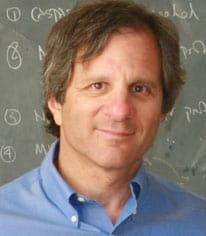Today was the last day of the AACR conference, and presentations focused on some lesser-known players in the immune response to cancer. We heard a lot earlier in the week about the important role of T cells—both natural and genetically modified—in fighting cancer. But T cells cannot do their job alone. Many other cell types play a role in supporting and, in some cases, suppressing the immune response.
 Lisa Coussens, PhD, of Oregon Health & Science University and a member of CRI’s Scientific Advisory Council, has for years been interested in the inflammatory environment that tumors elicit and perpetuate to their own benefit. Tumors in some ways act like “wounds that do not heal,” and the non-tumor cells that surround and intermix with tumor cells can actually discourage the immune system from eliminating the tumor. Coussens has looked at the composition of the tumor microenvironment in a variety of cancer types and found that each tumor type tends to have a slightly different, but characteristic, assemblage of cells that act to suppress the immune response, including a variety of myeloid cells as well as B cells. The end result of all these suppressive environments is the same—impaired T cell function—but the way that suppression is enacted differs in each cancer. Coussens is investigating how certain FDA-approved drugs such as rituximab (Rituxan) can be used to block the signals from immune-suppressive cells (B cells in this case) to release the T cells from suppression.
Lisa Coussens, PhD, of Oregon Health & Science University and a member of CRI’s Scientific Advisory Council, has for years been interested in the inflammatory environment that tumors elicit and perpetuate to their own benefit. Tumors in some ways act like “wounds that do not heal,” and the non-tumor cells that surround and intermix with tumor cells can actually discourage the immune system from eliminating the tumor. Coussens has looked at the composition of the tumor microenvironment in a variety of cancer types and found that each tumor type tends to have a slightly different, but characteristic, assemblage of cells that act to suppress the immune response, including a variety of myeloid cells as well as B cells. The end result of all these suppressive environments is the same—impaired T cell function—but the way that suppression is enacted differs in each cancer. Coussens is investigating how certain FDA-approved drugs such as rituximab (Rituxan) can be used to block the signals from immune-suppressive cells (B cells in this case) to release the T cells from suppression.
Ira Mellman, PhD, of Genentech, who is a member of our Scientific Advisory Council, gave a talk focused on understanding the role of immune cells called myeloid cells in determining the response of patients to anti-PD-L1 therapy. Most discussions of PD-L1 have focused on the role of PD-L1 on tumor cells. Tumor cells are believed to use PD-L1 as a way to deflect an impending T cell attack. But recent evidence from human clinical trials in a variety of cancer types suggests that PD-L1 expression on myeoloid cells may be just as, if not more, important. Patients with higher levels of PD-L1 expression in  tumor-resident myeloid cells had better responses than those with lower levels of expression. Mellman and his colleagues performed mouse studies to try to unravel the mechanism of action of this effect. The results he presented suggest a different mechanism of action of the PD-1 receptor than is widely assumed to be the case. Specifically, the PD-1 receptor may suppress T cell activity by inhibiting the costimulatory molecule CD28 rather than the T cell receptor itself. According to Mellman’s model, PD-L1 blocking antibodies work in part by blunting the suppressive effects of myeloid cells in the tumor microenvironment, rather than acting solely on the interaction between cancer cells and T cells.
tumor-resident myeloid cells had better responses than those with lower levels of expression. Mellman and his colleagues performed mouse studies to try to unravel the mechanism of action of this effect. The results he presented suggest a different mechanism of action of the PD-1 receptor than is widely assumed to be the case. Specifically, the PD-1 receptor may suppress T cell activity by inhibiting the costimulatory molecule CD28 rather than the T cell receptor itself. According to Mellman’s model, PD-L1 blocking antibodies work in part by blunting the suppressive effects of myeloid cells in the tumor microenvironment, rather than acting solely on the interaction between cancer cells and T cells.
That’s the suppressive side of things. What about the activators of immune response? Before T cells can do their job, they need to be activated by cells called antigen-presenting cells (APCs). You can think of an activated T cell as like a bloodhound on the hunt. If T cells are like bloodhounds, then APCs are the cells that provide the scent. Much current work is focused on ways to encourage APCs to take up antigens and present them to T cells. The generic name for this is vaccination.
Elizabeth Jaffee, MD, of Johns Hopkins, who is also a member of our Scientific Advisory Council, has for several years been focused on developing effective vaccines for pancreatic cancer, a type of cancer woefully devoid of T cells. It appears that pancreatic cancer is, as Jaffee said, “immunologically quiescent.” This is in striking contrast to cancers such as melanoma and lung cancer, where T cells are commonly found in side the tumor and for which checkpoint blockade therapy is often effective at unleashing a preexistent immune response. Jaffee has used a vaccine called GVAX to try to entice T cells into pancreatic tumors. GVAX is made up of pancreatic cells that have been irradiated and genetically modified to secrete a chemical called GM-CSF, which promotes the growth of dendritic cells, a type of antigen-presenting cell. She has shown that GVAX does indeed encourage T cells to enter pancreatic tumors, providing a rationale to combine this type of therapy with checkpoint inhibition. Jaffee has also experimented with a vaccine made up of a listeria bacterium genetically modified to contain mesothelin, a molecule that is often overexpressed in pancreatic cancer. A clinical trial combining GVAX and the listeria vaccine (called LADD listeria) with and without ipilimumab has just opened.
side the tumor and for which checkpoint blockade therapy is often effective at unleashing a preexistent immune response. Jaffee has used a vaccine called GVAX to try to entice T cells into pancreatic tumors. GVAX is made up of pancreatic cells that have been irradiated and genetically modified to secrete a chemical called GM-CSF, which promotes the growth of dendritic cells, a type of antigen-presenting cell. She has shown that GVAX does indeed encourage T cells to enter pancreatic tumors, providing a rationale to combine this type of therapy with checkpoint inhibition. Jaffee has also experimented with a vaccine made up of a listeria bacterium genetically modified to contain mesothelin, a molecule that is often overexpressed in pancreatic cancer. A clinical trial combining GVAX and the listeria vaccine (called LADD listeria) with and without ipilimumab has just opened.
Glenn Dranoff, MD, an associate director of CRI’s Scientific Advisory Council who recently was hired by the drug company Novartis to head their Immuno-Oncology division, has also experimented with a version of GVAX, in advanced melanoma. A challenge has been how to elicit an immune response against melanoma using this vaccine without at the same time eliciting the activity of regulatory T cells (Treg), which dampen the incipient immune response. It turns out that the GM-CSF that is a component of GVAX not only provides growth signals to antigen-presenting cells, but also supports the development of Tregs. Dranoff’s group has been experimenting with a new platform for the vaccine that involves implanting it in a subcutaneous polymer scaffold to create a protecting microenvironment and to which additional molecules are added that downregulate the Treg circuit and shift the immune response in the direction of cancer killing.
 Yet more vaccine work came from Drew Pardoll, MD, PhD, a former CRI investigator award recipient who is now a professor at Johns Hopkins and a member of our Scientific Advisory Council. Pardoll presented work from his lab showing that the GVAX vaccine can be made more potent by incorporating bits of DNA that serve as PAMPS, or pathogen-associated molecular patterns, into it. This modified vaccine is known as STINGVAX, and studies in mice show that it can be combined with checkpoint blockade therapy to cure mice of their cancers in many cases. Though still in preclinical stages, there is much interest in this research as a way to create a more effective vaccine for patients.
Yet more vaccine work came from Drew Pardoll, MD, PhD, a former CRI investigator award recipient who is now a professor at Johns Hopkins and a member of our Scientific Advisory Council. Pardoll presented work from his lab showing that the GVAX vaccine can be made more potent by incorporating bits of DNA that serve as PAMPS, or pathogen-associated molecular patterns, into it. This modified vaccine is known as STINGVAX, and studies in mice show that it can be combined with checkpoint blockade therapy to cure mice of their cancers in many cases. Though still in preclinical stages, there is much interest in this research as a way to create a more effective vaccine for patients.
Finally, James Allison, PhD, director of our Scientific Advisory Council, presented work showing how the response to ipilimumab (anti-CTLA-4) checkpoint blockade therapy can be boosted, in mice, by combining it with an oncolytic virus genetically modified to contain a molecule that stimulates a signaling pathway on T cells called ICOS. Previous work by Allison and others had shown that, in patients who respond to ipi, their T cells often expressed higher levels of ICOS—providing a rationale for trying to target this pathway in non-responders.
With all of these approaches, the goal is to increase the number of cancers that respond to immunotherapy. Experience with melanoma, lung cancer, kidney cancer, and a few others has shown us that the immune system is—perhaps uniquely—capable of achieving long-lasting remissions of advanced cancers. Yet only a fraction of patients treated with currently available immunotherapies respond to them. The challenge now is to figure out how to unleash and strengthen the power of the immune response to turn more non-responders into responders.
